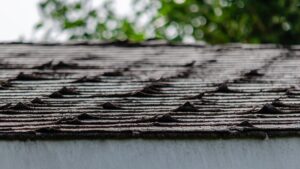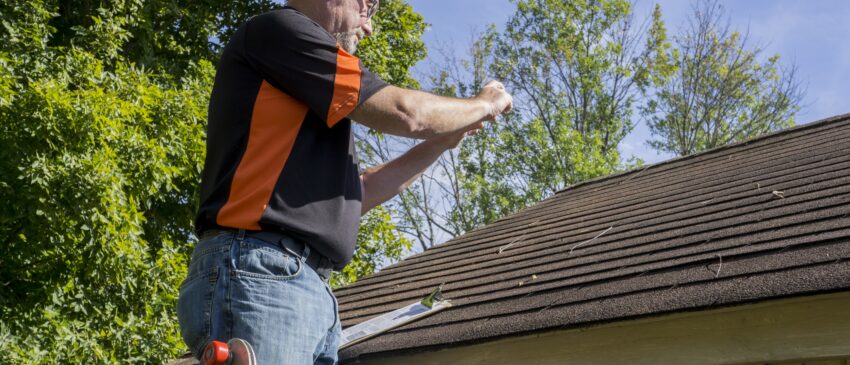Your roof is the unsung hero of your home, protecting you and your loved ones from the elements year-round. But like any hero, it too can fall victim to wear and tear over time. As roofing experts in Riverside, CA we know the importance of keeping a watchful eye on your roof’s condition. While some signs of damage may be glaringly obvious, others can creep up on you without warning. In this article, we’ll unveil four hidden red flags of a damaged roof that you may have never considered. Pay attention to the signs we discuss below to avoid costly repairs down the road and keep your roof in tip-top shape.
-
Loss of Granules

Asphalt shingles are the most commonly used shingles in residential homes to shield the property from the weather. The granules on the surface of the shingles are a crucial component, as they reflect the sun’s rays and prevent the shingles from deteriorating rapidly.
Over time, these granules can loosen or wear away, leading to bare spots on your shingles or granules in your gutters or downspouts. This can result in premature aging and cracking of your shingles, causing leaks and water damage to the interior of your home.
-
Curling Shingles

Another issue with asphalt shingles is curling, which can occur when the edges turn up or the middle sags down. This can happen due to exposure to the sun, age, or poor ventilation in the attic. Curling shingles can allow water to seep underneath, damaging the underlying roof structure. Moreover, they are more prone to wind damage and can easily blow off during a storm.
If you notice any of these issues, it’s crucial to have your roof inspected by a professional roofing contractor like Gary Thompson at Thompson Roofing to determine the extent of the damage. Allowing minor damage to your roof could cost you more in the long run. Give us a call at 909-377-4402 for a free inspection.
-
Damaged Flashing

Flashing is the material used to seal the gaps around your roof’s edges, valleys, and penetrations like chimneys and skylights. If flashing is damaged or missing, water can easily seep into your home and cause damage to the interior. Flashing can become damaged due to age, exposure to the elements, or improper installation. If you notice any signs of damage or rust, it’s important to have it repaired or replaced as soon as possible.
It’s essential to have your roof inspected by a licensed roofing contractor as soon as possible to prevent further damage. Thompson Roofing has been in business for over 30 years and we can come out and inspect any potential water damage. to schedule an inspection, call us at 909-377-4402 or Contact Us by email to set up an appointment.
-
Exposed Nail Heads

One of the most common signs of damage is the appearance of exposed or loose nail heads. These nails may become dislodged due to weather conditions like high winds or improper installation, leaving behind holes and spaces that are vulnerable to water penetration.
When water seeps through these gaps, it can cause damage to the underlayment of the roof and eventually lead to leaks. If left unaddressed, this moisture can cause severe damage to your roof, and you may be forced to replace it sooner than expected.
So, it’s essential to inspect your asphalt shingle roof regularly and take action promptly if you notice any signs of damage, such as exposed or loose nail heads.
Conclusion
Regular maintenance and inspections are the keys to detecting potential roofing issues early on. By staying vigilant and keeping an eye out for these commonly overlooked signs of a damaged roof, you can avoid costly repairs and ensure the protection of your home for years to come.
If you do notice any signs of damage, don’t hesitate to contact a professional roofing contractor. At Thompson Roofing Riverside, we are dedicated to providing top-notch services and helping you maintain a healthy and long-lasting roof for your home. Get in touch with us today at 909-377-4402 to schedule an inspection or learn more about our services. With our expertise and commitment to quality, you can trust us to keep your roof in impeccable shape.



